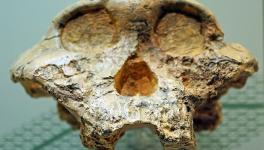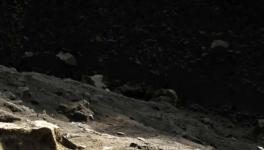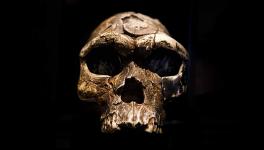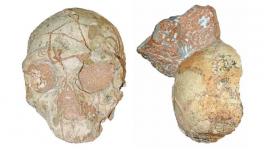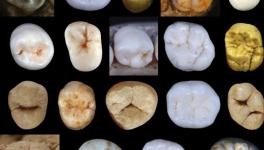New Fossil Skull in Israel Stirs Up Debate: Earliest Neanderthal or Unknown Neanderthal Ancestor?
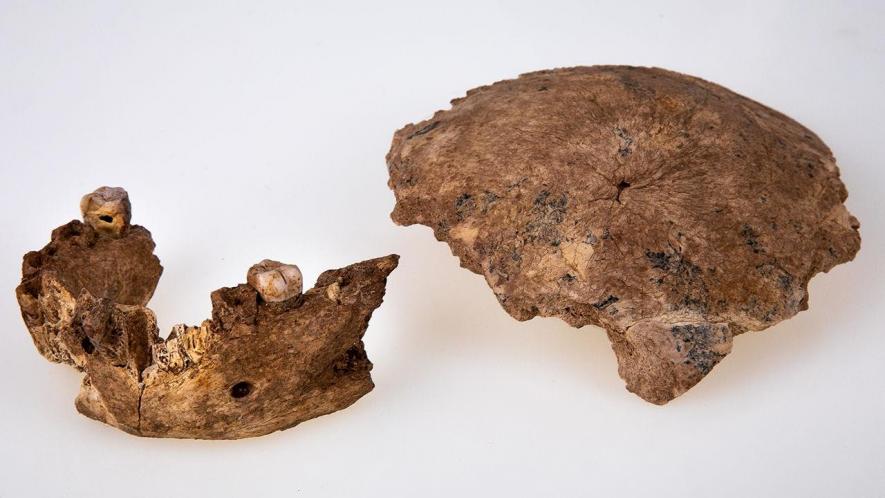
Skull Fossils in Nesher Ramla, Israel. Image Courtesy: Science. Representational use only.
After the Dragon Man fossil skull in China, new fossils discovered in Israel have also stirred up a debate about its origins, whether it is the earliest known Neanderthal in Middle East or a new ancestor of the Neanderthals. While these skull fossils are expanding the human family tree, many questions about them still remain unanswered.
Two recently published papers in Science have proposed that the fossils from Israel belonged to a previously unknown group of hominins, who were direct ancestors of the Neanderthals and might have dominated the Levant and lived along with the modern humans, Homo sapiens.
Similar to the Dragon Man skull of China, the Israel fossil analysis also depends on size, shape and structure of bones, devoid of any DNA evidence.
Also read: China’s ‘Dragon Man’ Skull May be From a Denisovan or a New Human Species
During recent times, the story of human evolution in the past half million years has grown more complicated than ever. Researchers have added more species to the Homo genus (which consists of the modern humans, that is the Homo sapiens, along with other extinct species whose ancestors were closely related to the modern humans. For example, the Homo erectus, Homo neanderthalis and so on). The family tree now has Homo floresiensis (discovered in 2003), Denisovans, Homo naledi (discovered in 2013 in South Africa), Homo luzonensis (found in Philippines and details about it published in 2019).
These species co-existed with modern humans that are thought to have emerged in Africa and migrated to other regions via Israel, some 200,000 years ago. Along with modern humans, these species also co-existed with the Neanderthals, which were present largely in Europe some 300,000 years back and became extinct over 40,000 years ago.
Adding to this, some of the hominin fossils belonging to this time period still don’t fit exactly in to any existing categories. Carrying forward from this, the Israel group believe that they may have identified a new hominin group.
Anthropologist Israel Hershkovitz of Tel Aviv University and his colleagues conducted a series of analyses on the skull fragments found at the site of Nesher Ramla in central Israel. The fragments consisted of jaw and parietal bones (part of the head). The fossils belong to the period between 140,000 to 120,000 years ago.
The common idea is that only Homo sapiens lived in the area of the Middle East at this time period. The conclusive evidence of Neanderthal presence here dates back to 70,000 years ago. Hila May, also from the Tel Aviv University and a part of the research and a co-author of one of the two papers, was said, “What we expected to find was Homo sapiens. At first glance, for sure it wasn’t. The jaw and teeth were Neanderthal-like, but the skull shape was more archaic — an unusual combination.” May further said that they couldn’t assign the new fossils to any other fossils found previously around Israel.
Notably, there have been other fossils found around Israel, some of which date back to 400,000 years ago. None of these fossils had been classified previously.
The research group proposed in their papers that all the new fossils belong to a previously unknown hominin population, and they have named it as the Nesher Ramla people. The team also said that the hominin species might have dominated the region for hundreds or thousands of years. The team claimed that the Nesher Ramla people were members of an unknown umbrella species, rather than making a new species themselves.
The Nesher Ramla people also seemed to have been skilled with the same stone tools as the modern humans habitating the area.
However, there are caveats. Some researchers do not completely agree with the claims of the findings. Paleoanthropologist Jean Jacques Hublin of Max Planck Institute of Evolutionary Anthropology said, “The fossils are too recent to represent the source population for Neanderthals, whose earliest known ancestors lived more than 400,000 years ago at Sima de los Huesos in Spain. That’s an over interpretation of the fossil evidence.”
Philip Rightmire, another paleoanthropologist of Harvard University has said that “the skull looks like more of an early, archaic Neanderthal”.
As such doubts still remain over whether the Nesher Ramla fossils belong to a new hominin species or they belong to an ancestor of the Neanderthals.
Also read: Ancient Human Genomes Shed New Light on Interbreeding of Humans and Neanderthals
Get the latest reports & analysis with people's perspective on Protests, movements & deep analytical videos, discussions of the current affairs in your Telegram app. Subscribe to NewsClick's Telegram channel & get Real-Time updates on stories, as they get published on our website.









